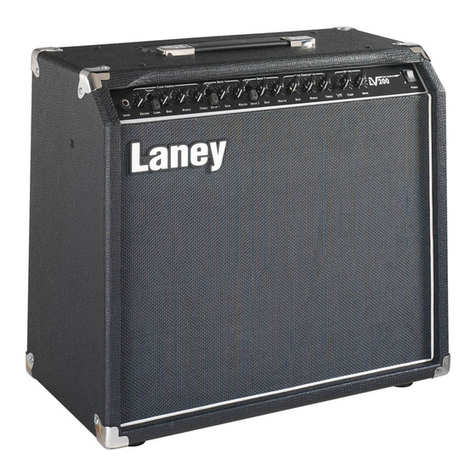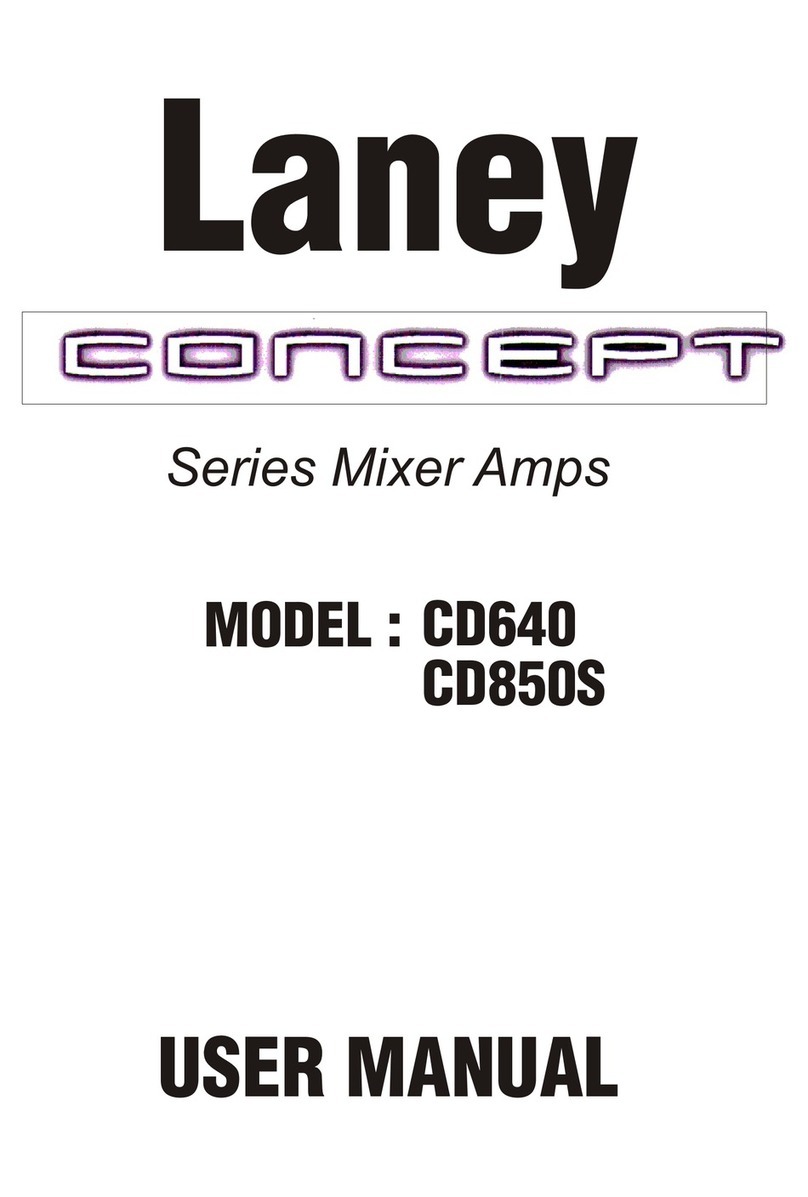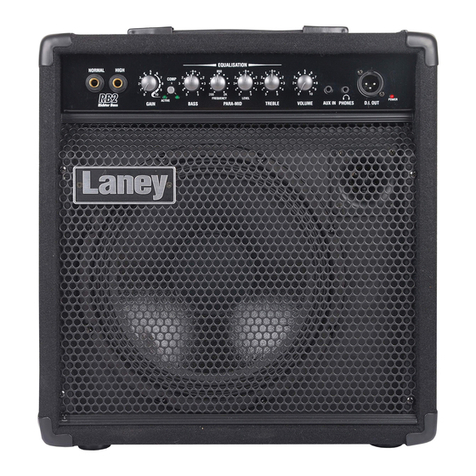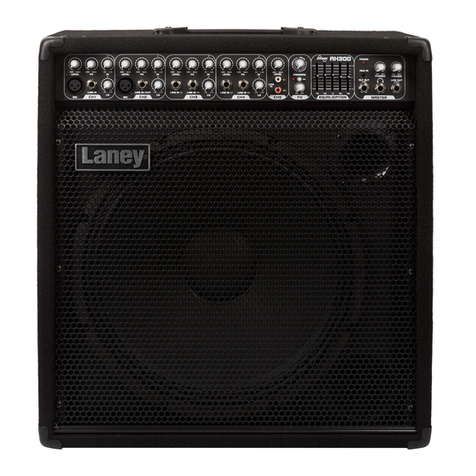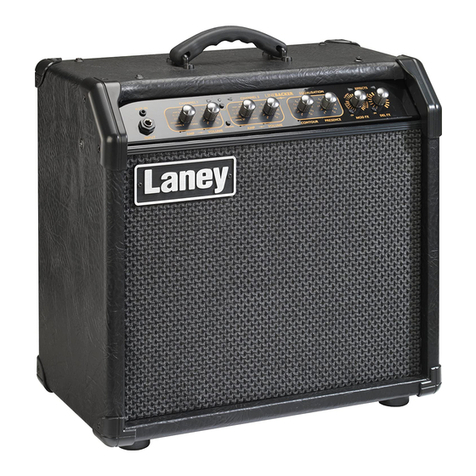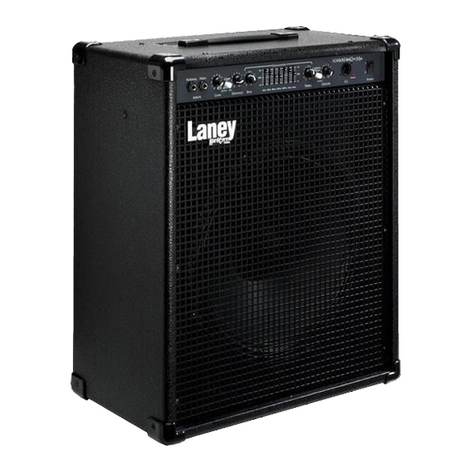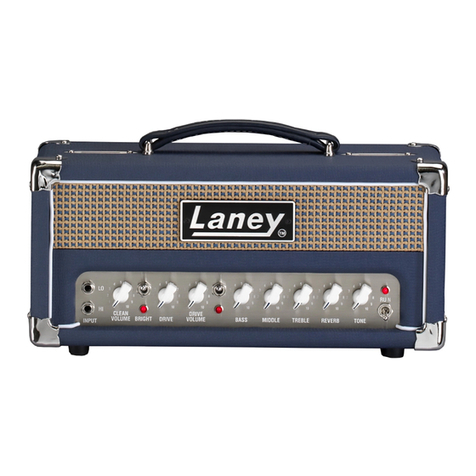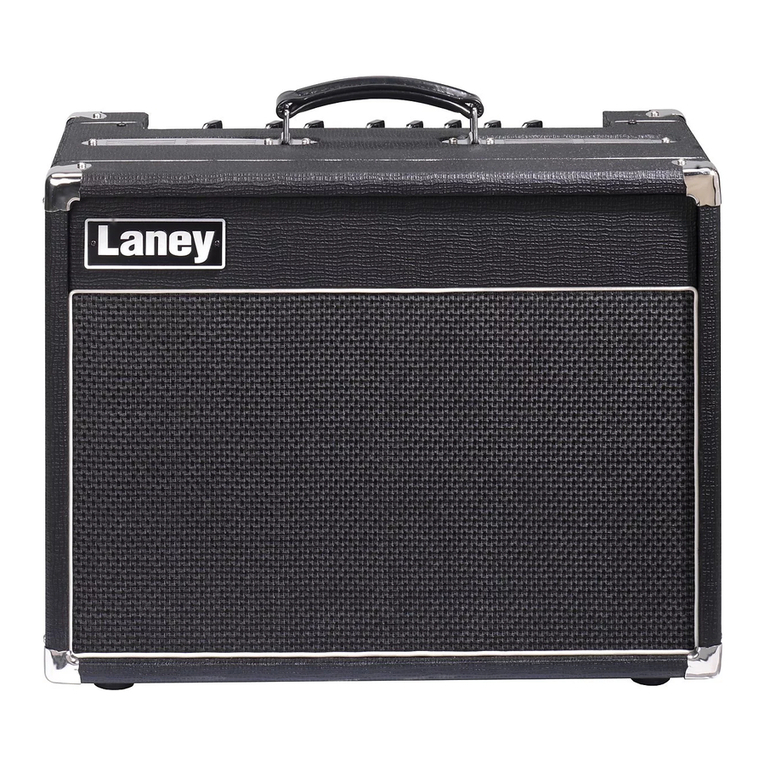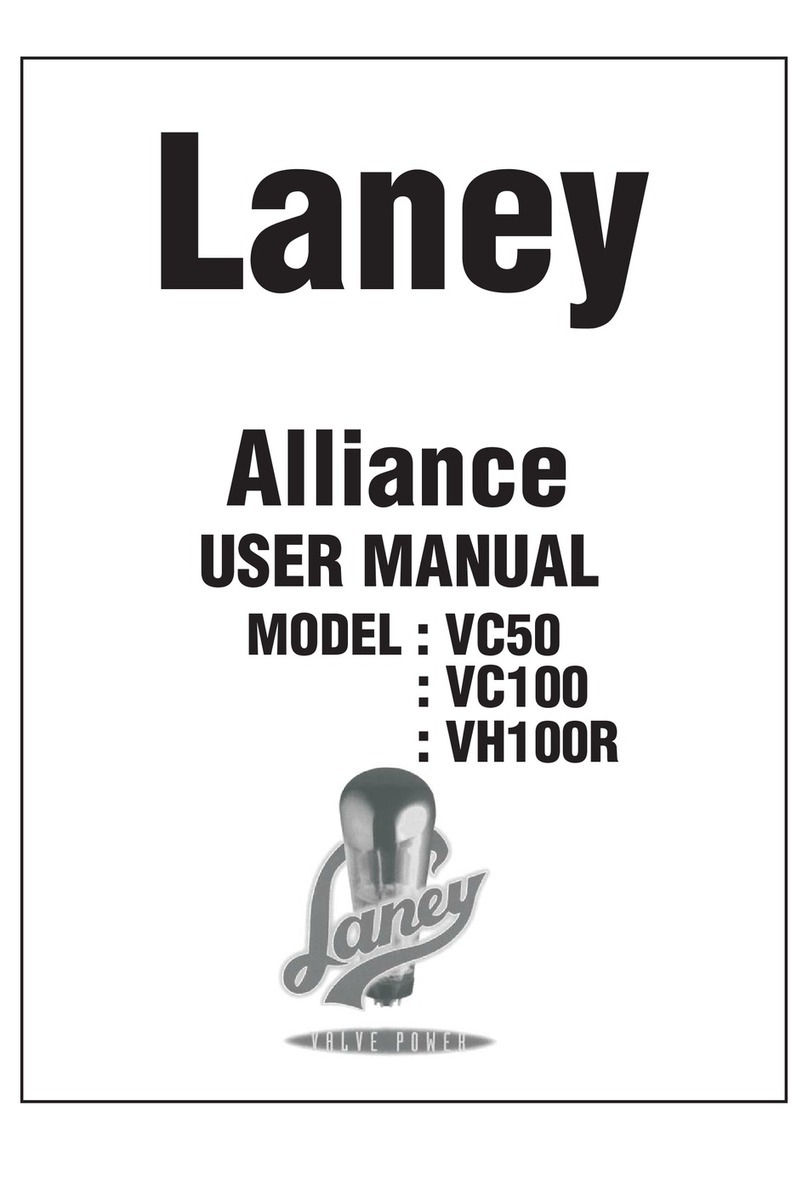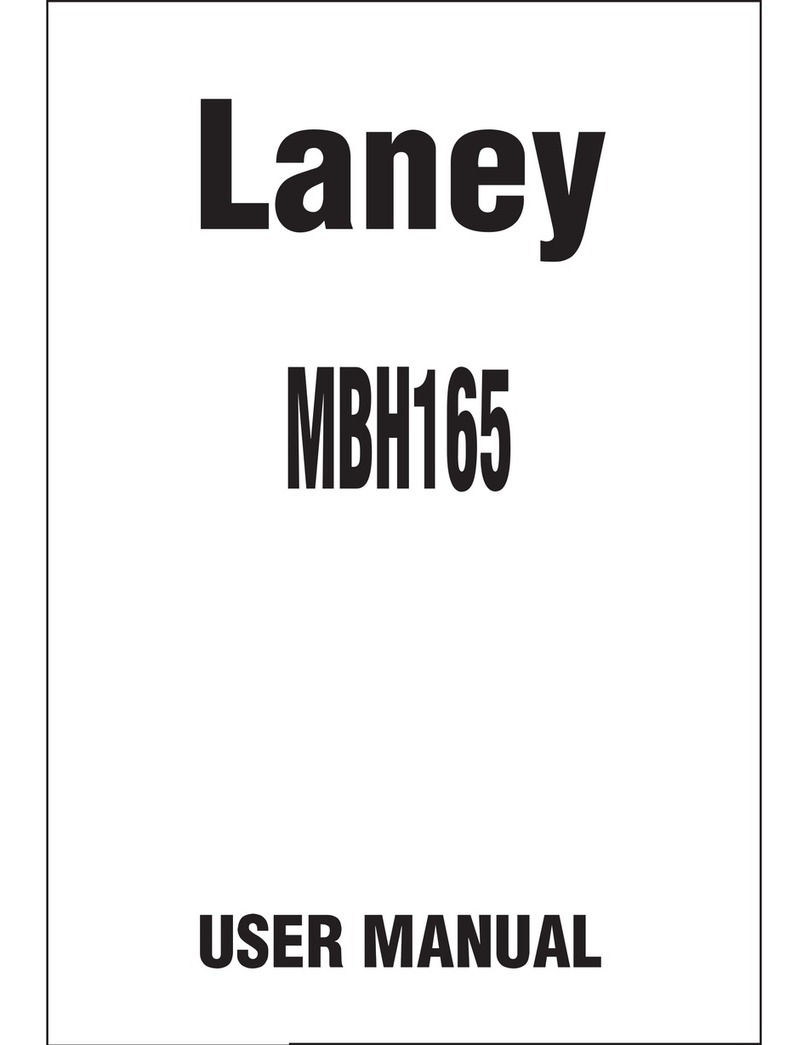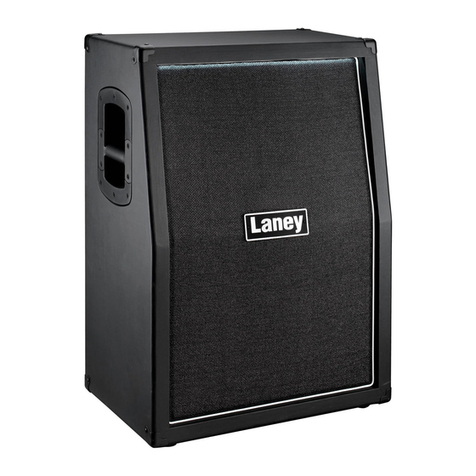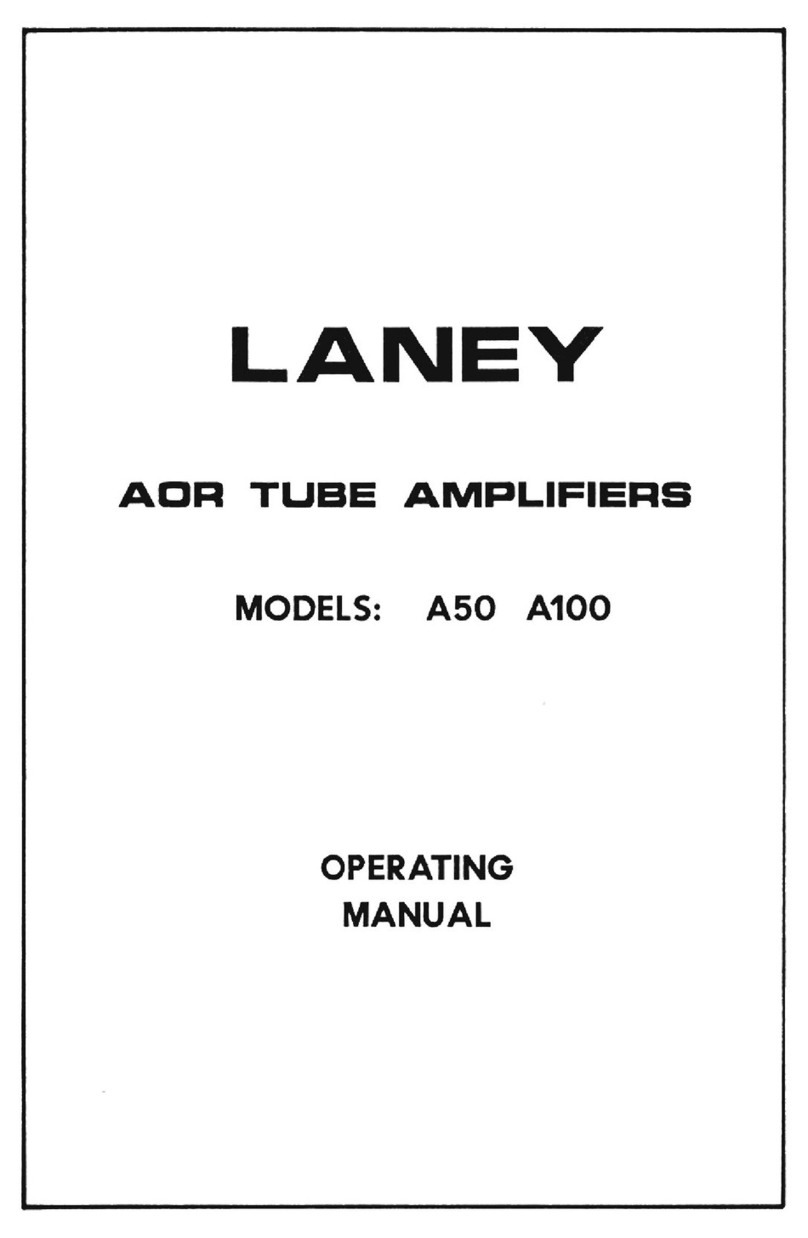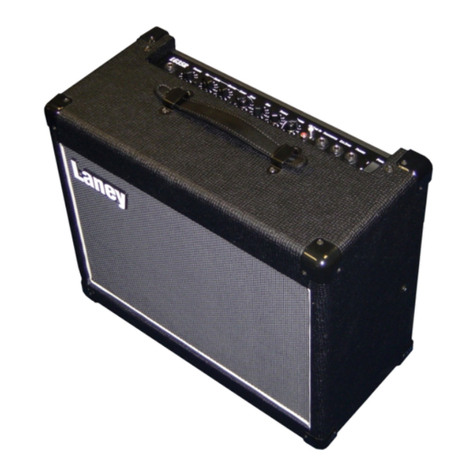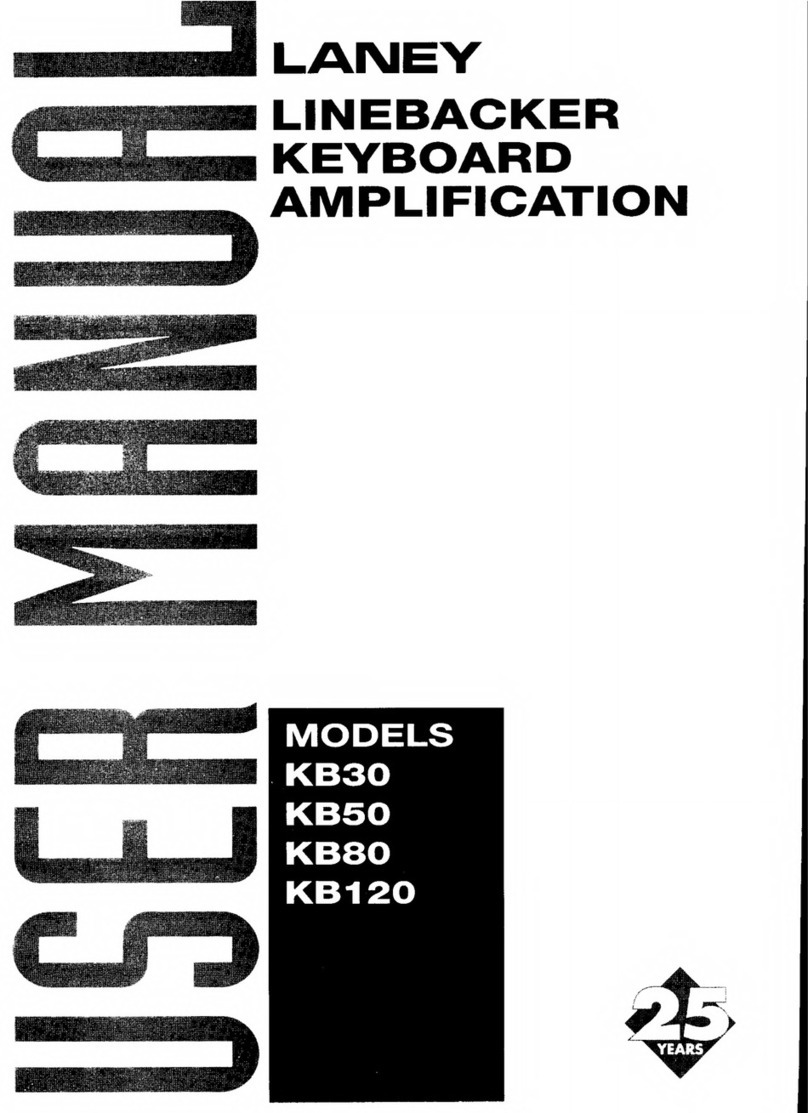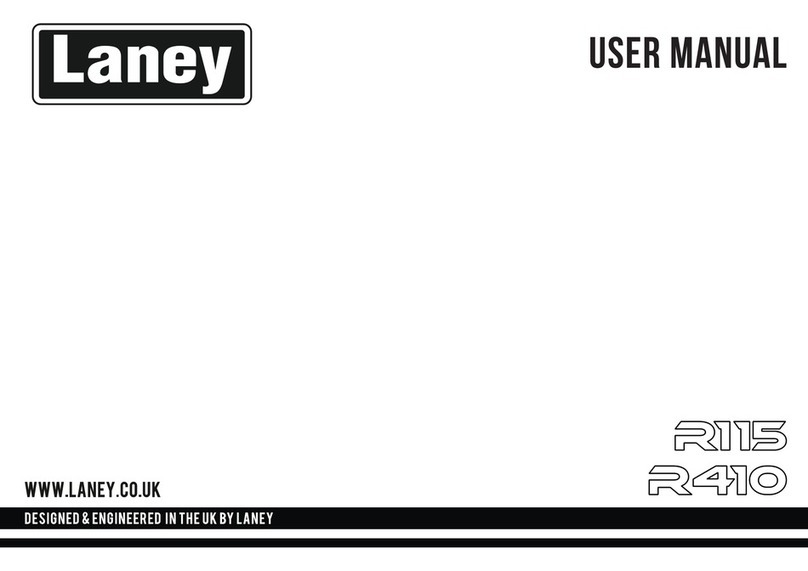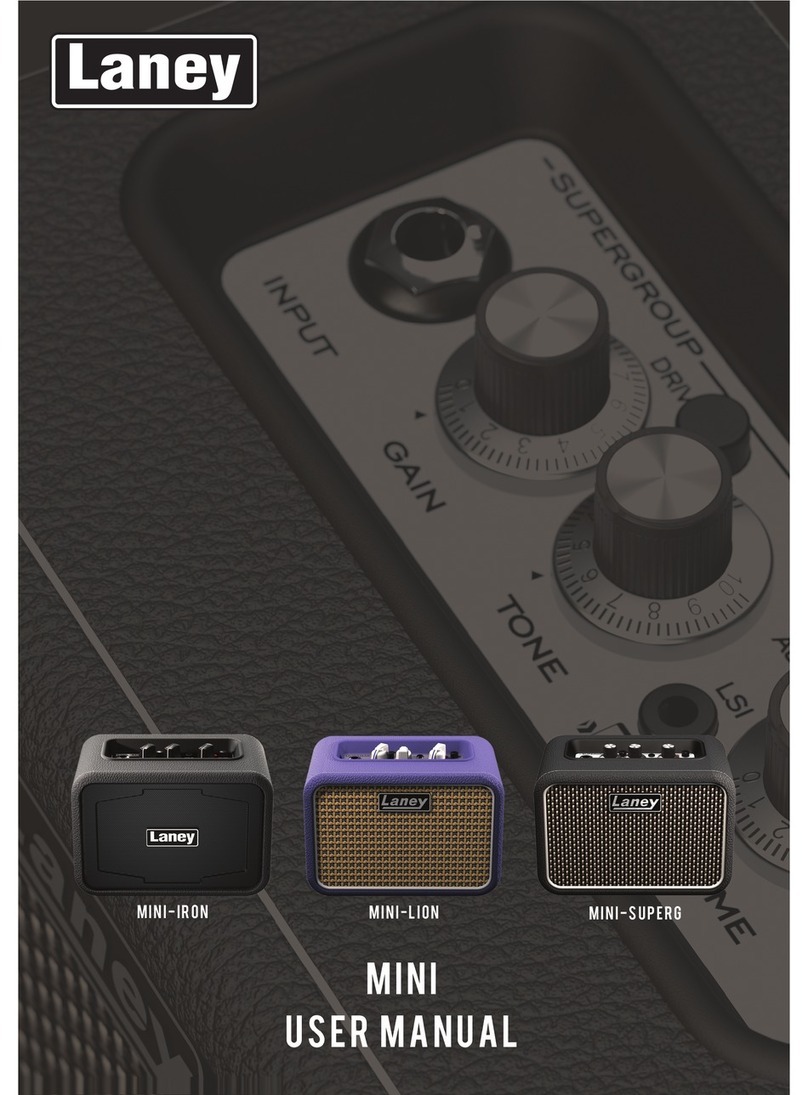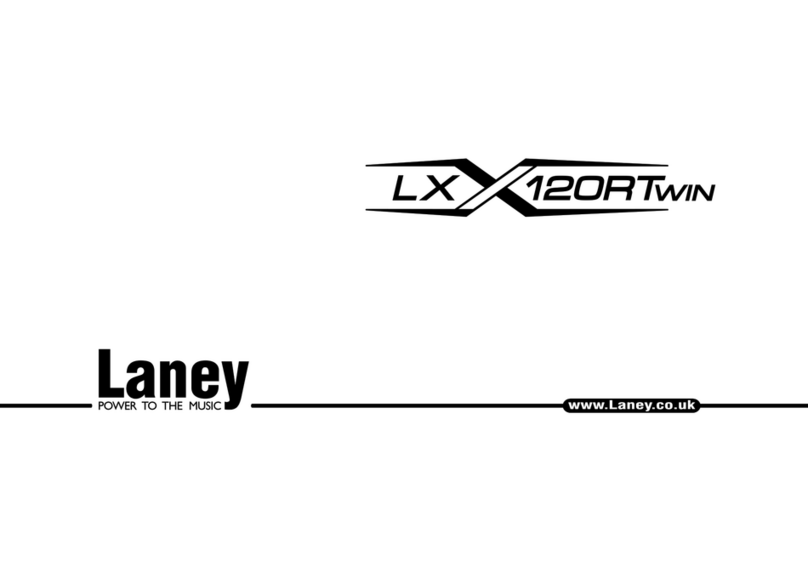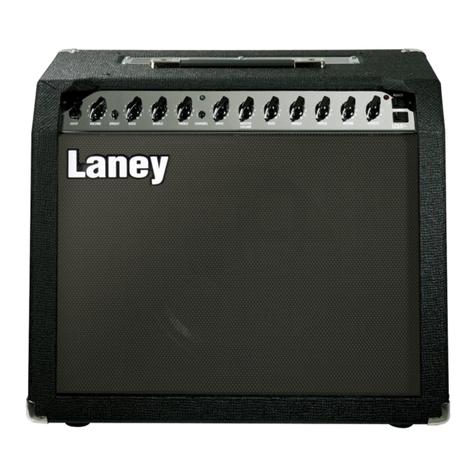Laney
55
POWER SOCKET: For connecting amplifier to mains power-supply.
POWER FUSE: This fuse protects the AC power of the overall amplifier. Use ONLY the correct size and rating of
fuse as specified on the panel. If a fuse blows or fails and a replacement of the same size and rating is installed and this
in turn blows, the amplifier has suffered an internal malfunction. At this point immediate service from a qualified
technician is required; DO NOT TRY USING A FUSE OF HIGHER RATING.
HT FUSE: This fuse protects the DC power within the amplifier. Use only the correct size and rating fuse as specified
on the panel. If a fuse blows or fails and a replacement of the same size and rating is installed and it in turn blows, the
amplifier has suffered a malfunction, at this point check the output valves and replace faulty one if required. Should
the valves not be the problem, the amplifier should be checked out by a qualified technician; DO NOT TRY USING A
FUSE OF GREATER VALUE. Using fuses that are too large in current rating may cause serious irreparable damage
to the amplifier. Fuses are designed-in to PROTECT, DO NOT take chances.
EXTENSION SPEAKER SOCKET: This is the socket to which you should connect an 8 Ohm extension cabinet.
When an extension cabinet is connected, the resultant impedance will be 4 Ohms and the speaker impedance-switch
should be set to 4 Ohms. Mismatched impedance will reduce the amplifiers performance and in some cases may cause
damage to your amplifier.
IMPEDANCE SELECTOR SWITCH: This switches the internal impedance setting of the amplifier. When using
with the 'on board' speaker set to 8 ohms. When an 8 ohm extension cabinet is also connected, set to 4 ohms.
INTERNAL SPEAKER SOCKET: 1/4" output-jack factory-connected to the 'on-board' speaker. With no
extension cabinet connected, ensure the impedance-selector-switch (24) is set to 8 ohms.
POWER AMP/LINE IN: This socket is provided to allow a signal to be fed directly to the power-amplifier from
either an effects-unit or another pre-amplifier. Connection at this point disconnects the internal pre-amplifier:
nominal level 0dBu.
POWER AMP/LINEOUT: This socket provides an output from the pre-amplifier, post effects-loop and may be used
to drive other power-amplifiers, effects-units or mixing-desks: nominal level 0dBu.
FOOTSWITCH SOCKET: This is a 5-pin 180 DIN socket for connection of the dedicated footswitch (FS4) as
supplied with the amplifier. The FS4 is a four-way-switch that facilitates remote-operation of both channels and
reverb.
RETURN LEVEL: This control adjusts the signal-level returning from an external effects-unit and allows the
correct mix to be achieved. Regardless of whether an effects-unit is connected, the return-level can be used to provide
additional pre-amplifier gain for both channels. This is a useful feature when, for example, you might want total
valve-saturation but a low output-level. This is performed by switching the INSERT MODE SWITCH (31) to
INSERT. This allows you to increase the pre-amplifier's volume and gain controls and control the output-level via the
RETURN-LEVEL rotary control. This process can also be applied in reverse; that is, increasing the power-amplifier
gain via the RETURN-LEVEL and controlling the output-level with the controls on the front-panel; turning the
RETURN-LEVEL fully-clockwise facilitates a gain increase of approximately 3dB. It is important to realise that the
RETURN-LEVEL and the volume and gain controls on the front-panel operate in tandem, offering a wide spectrum
of tonal response.
RETURN SOCKET:This is provided to receive the output of an external effects-unit being driven from the send
socket (32).
EFFECTS MODE SWITCH: For normal amplifier operation without effects this should be set to the BYPASS
position. When the whole of the amplifier signal is required to be directed to an external effect, such as a Graphic-EQ,
the switch should be set to INSERT mode. The SIDE CHAIN mode allows the connection of effects-units such as
delays, flangers, etc., where a direct signal-path is maintained to avoid the normal loss of dynamics through effects-
processors. When using this mode any effects-unit should, if possible, be set to 'EFFECT ONLY' mode.
EFFECTS SEND SOCKET: This provides an output from the pre-amplifier to drive effects-units in conjunction
with (30) & (31). Nominal level 0dBu.
EFFECTS LOOP SEND (OVERDRIVE CHANNEL): This socket provides an output from the pre-amplifier for
sending to an external effects-processor. Processors fitted here operate in a 'side chain' mode and should be set for
effect only operation if possible; nominal level 0dBu.
20
26
21
22
23
24
28
25
27
29
30
31
32
33
